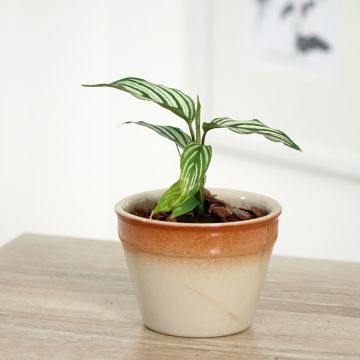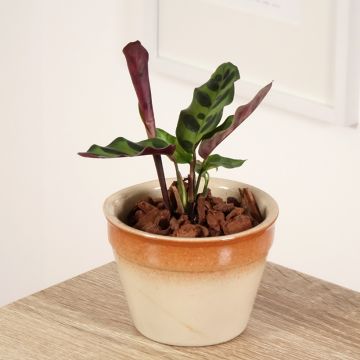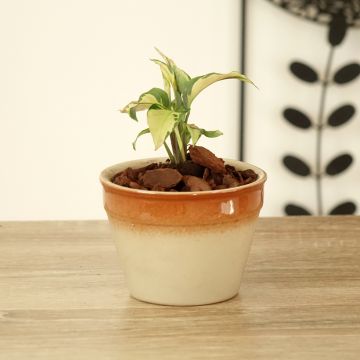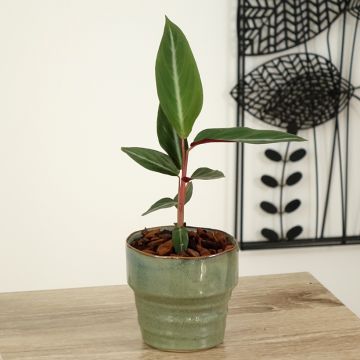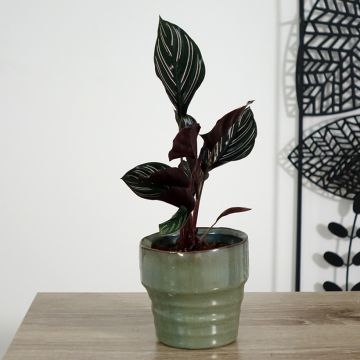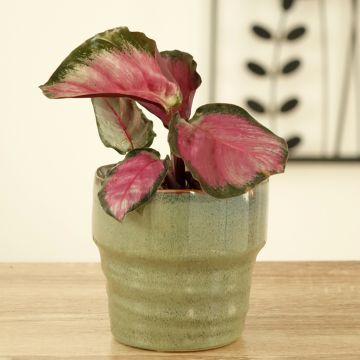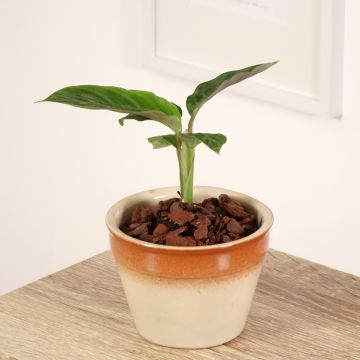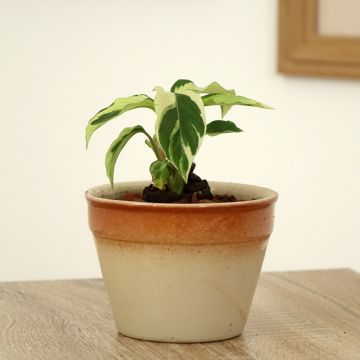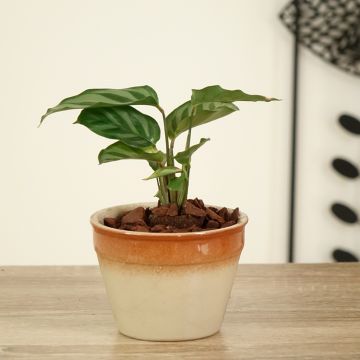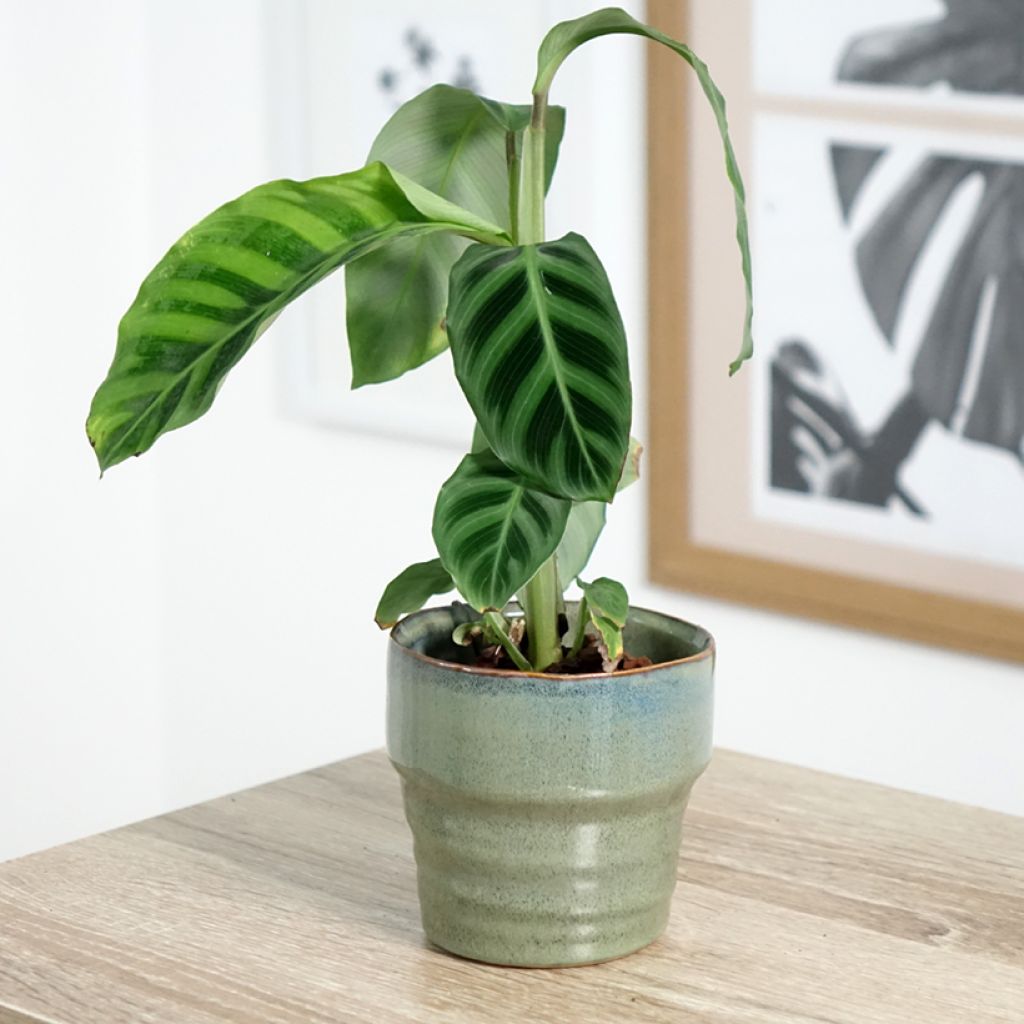

Calathea zebrina - Zebra Plant
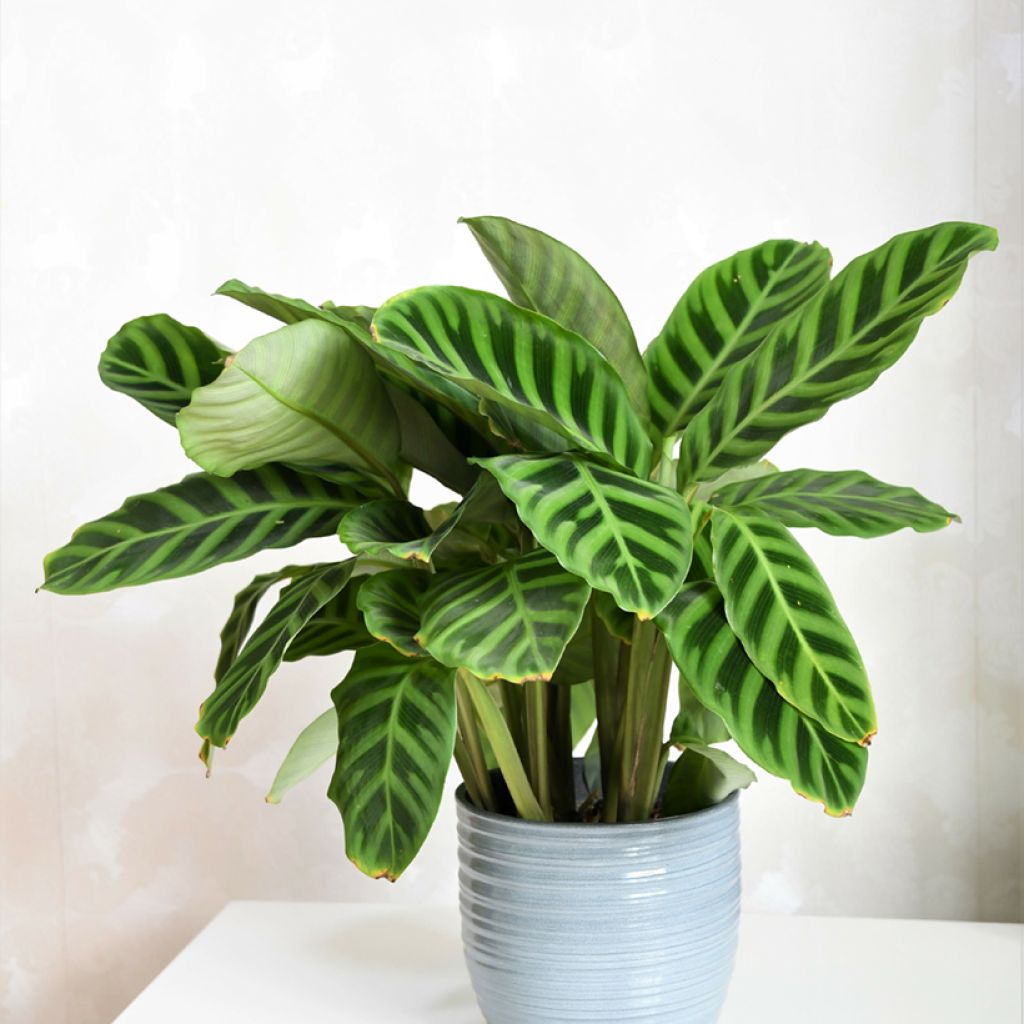

Calathea zebrina - Zebra Plant


Calathea zebrina - Zebra Plant


Calathea zebrina - Zebra Plant
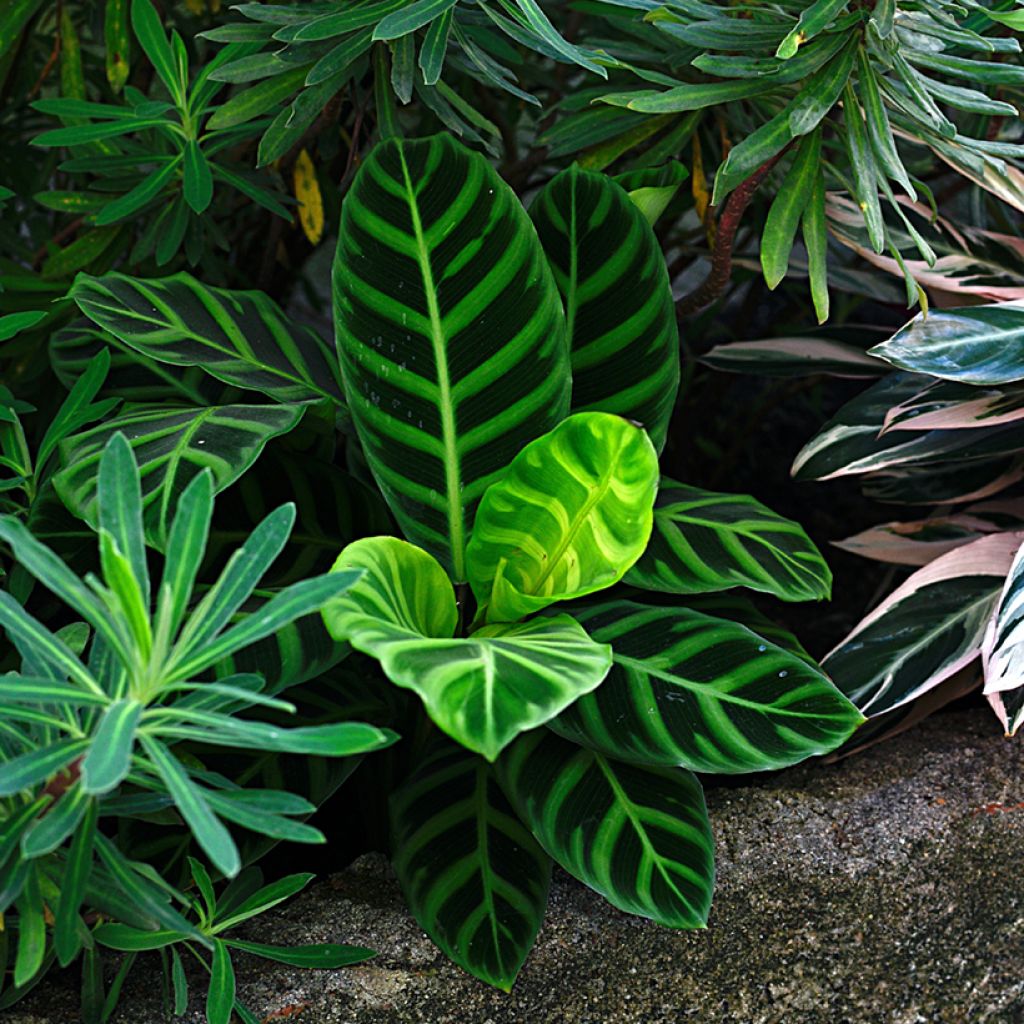

Calathea zebrina - Zebra Plant
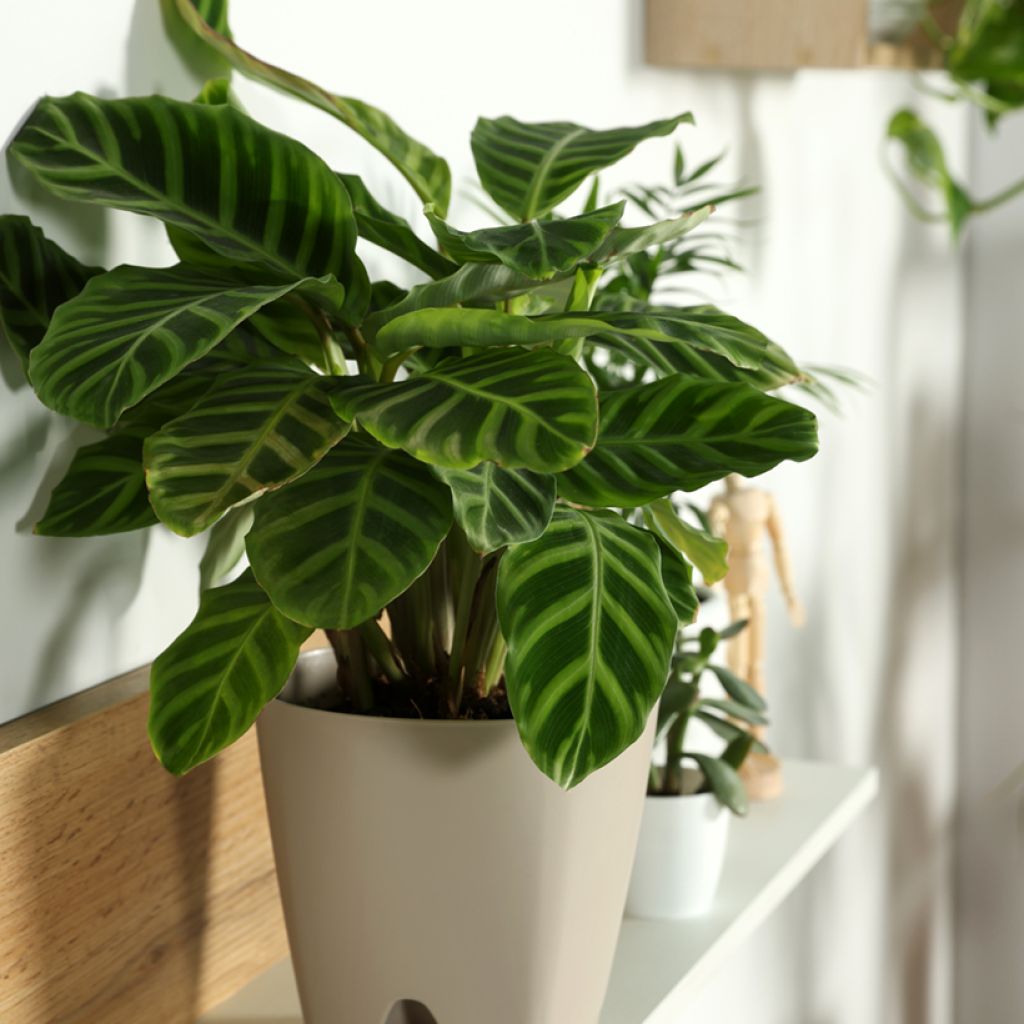

Calathea zebrina - Zebra Plant


Calathea zebrina - Zebra Plant
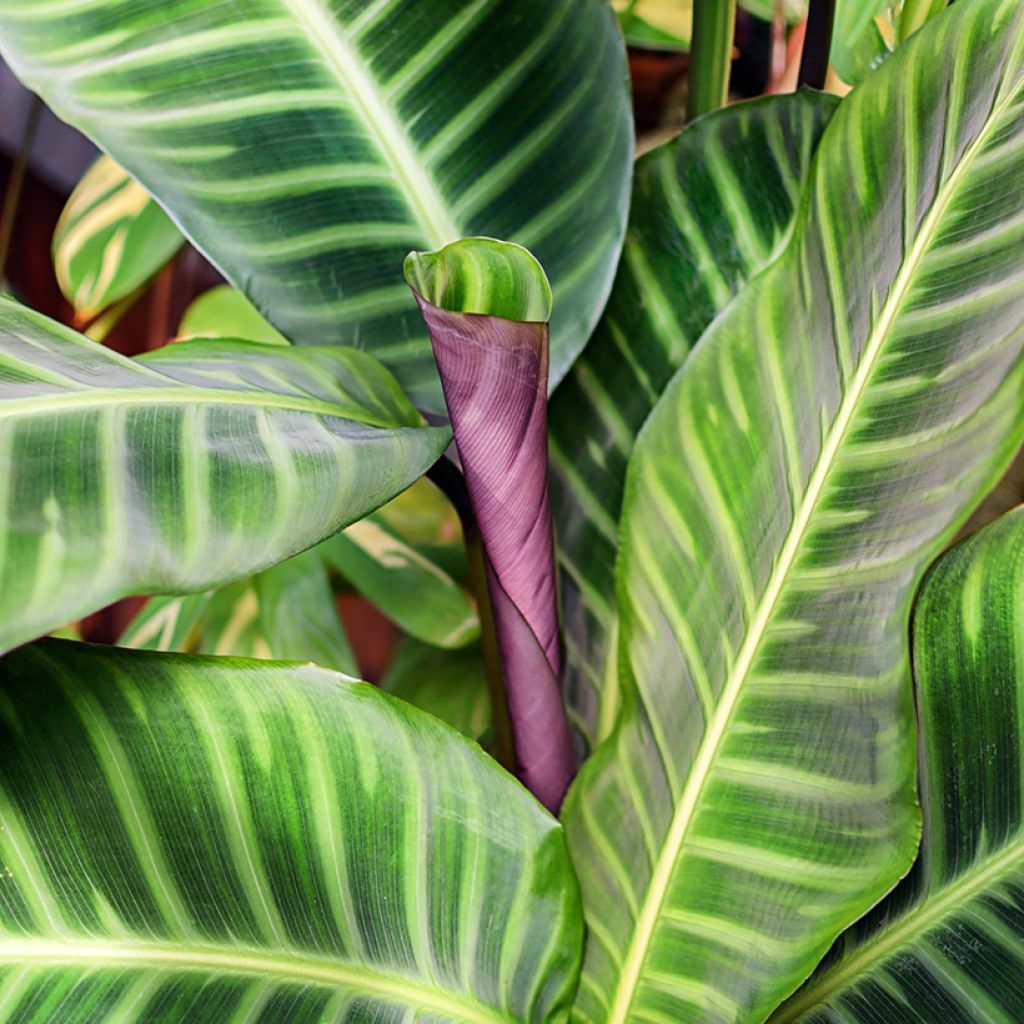

Calathea zebrina - Zebra Plant


Calathea zebrina - Zebra Plant
Calathea zebrina - Zebra Plant
Calathea zebrina
Zebra plant
Why not try an alternative variety in stock?
View all →This plant carries a 30 days recovery warranty
More information
We guarantee the quality of our plants for a full growing cycle, and will replace at our expense any plant that fails to recover under normal climatic and planting conditions.
Description
The Calathea zebrina, also known as Zebra Plant, is an exotic houseplant renowned for its unusually striking foliage. Its large, velvety leaves adorned with dark green patterns on a light green background resemble zebra stripes. Its foliage adds an elegant and tropical touch to your interior living space. Perfect for urban jungle, boho chic, or contemporary styles, it has a strong personality. Place it in a bright spot without direct sunlight to prevent its leaves from drying out, and maintain a consistent temperature and humidity level.
The Calathea zebrina, recently renamed Goeppertia zebrina, belongs to the Marantaceae family. It is a herbaceous perennial with an upright and bushy habit, reaching between 60 and 90 cm in height and approximately 50 to 70 cm in spread, depending on growing conditions. Its leaves are ovate to elongated, slightly pointed, and have a velvety texture. Each leaf features dark green veins alternating with light green bands, while the underside has a purplish hue.
Although primarily admired for its foliage, this variety can produce subtle white or lilac flowers in its natural habitat, though they rarely appear indoors. Native to the tropical forests of Brazil, it thrives in humid and shaded environments under dense canopies. In the wild, it enjoys year-round warm temperatures and soil that is both rich in humus and well-drained. Indoors, it requires regular misting and moderate but consistent watering.
The Calathea genus is known for its 'nyctinastic' behaviour, meaning its leaves slightly close at night as if they are 'sleeping'.
The Calathea zebrina will create an exotic and lush atmosphere in your home. Place it in a bright living room without direct sunlight, in the kitchen, or in a bright bathroom where it will thrive thanks to the ambient humidity. To showcase it, opt for a textured ceramic planter or a natural fibre basket, ideal for a boho chic or urban jungle style. Position it on a wall shelf or in the corner of a room to create a lush and welcoming green space.
Report an error about the product description
Calathea zebrina - Zebra Plant in pictures




Foliage
Plant habit
Botanical data
Calathea
zebrina
Marantaceae
Zebra plant
South America
Other Calathea
View all →Location
Location
Maintenance and care
Potting advice, substrates and fertilisers
Houseplant care
Disease and pest advice
Maintenance and care
This item has not been reviewed yet - be the first to leave a review about it.
Haven't found what you were looking for?
Hardiness is the lowest winter temperature a plant can endure without suffering serious damage or even dying. However, hardiness is affected by location (a sheltered area, such as a patio), protection (winter cover) and soil type (hardiness is improved by well-drained soil).

Photo Sharing Terms & Conditions
In order to encourage gardeners to interact and share their experiences, Promesse de fleurs offers various media enabling content to be uploaded onto its Site - in particular via the ‘Photo sharing’ module.
The User agrees to refrain from:
- Posting any content that is illegal, prejudicial, insulting, racist, inciteful to hatred, revisionist, contrary to public decency, that infringes on privacy or on the privacy rights of third parties, in particular the publicity rights of persons and goods, intellectual property rights, or the right to privacy.
- Submitting content on behalf of a third party;
- Impersonate the identity of a third party and/or publish any personal information about a third party;
In general, the User undertakes to refrain from any unethical behaviour.
All Content (in particular text, comments, files, images, photos, videos, creative works, etc.), which may be subject to property or intellectual property rights, image or other private rights, shall remain the property of the User, subject to the limited rights granted by the terms of the licence granted by Promesse de fleurs as stated below. Users are at liberty to publish or not to publish such Content on the Site, notably via the ‘Photo Sharing’ facility, and accept that this Content shall be made public and freely accessible, notably on the Internet.
Users further acknowledge, undertake to have ,and guarantee that they hold all necessary rights and permissions to publish such material on the Site, in particular with regard to the legislation in force pertaining to any privacy, property, intellectual property, image, or contractual rights, or rights of any other nature. By publishing such Content on the Site, Users acknowledge accepting full liability as publishers of the Content within the meaning of the law, and grant Promesse de fleurs, free of charge, an inclusive, worldwide licence for the said Content for the entire duration of its publication, including all reproduction, representation, up/downloading, displaying, performing, transmission, and storage rights.
Users also grant permission for their name to be linked to the Content and accept that this link may not always be made available.
By engaging in posting material, Users consent to their Content becoming automatically accessible on the Internet, in particular on other sites and/or blogs and/or web pages of the Promesse de fleurs site, including in particular social pages and the Promesse de fleurs catalogue.
Users may secure the removal of entrusted content free of charge by issuing a simple request via our contact form.
The flowering period indicated on our website applies to countries and regions located in USDA zone 8 (France, the United Kingdom, Ireland, the Netherlands, etc.)
It will vary according to where you live:
- In zones 9 to 10 (Italy, Spain, Greece, etc.), flowering will occur about 2 to 4 weeks earlier.
- In zones 6 to 7 (Germany, Poland, Slovenia, and lower mountainous regions), flowering will be delayed by 2 to 3 weeks.
- In zone 5 (Central Europe, Scandinavia), blooming will be delayed by 3 to 5 weeks.
In temperate climates, pruning of spring-flowering shrubs (forsythia, spireas, etc.) should be done just after flowering.
Pruning of summer-flowering shrubs (Indian Lilac, Perovskia, etc.) can be done in winter or spring.
In cold regions as well as with frost-sensitive plants, avoid pruning too early when severe frosts may still occur.
The planting period indicated on our website applies to countries and regions located in USDA zone 8 (France, United Kingdom, Ireland, Netherlands).
It will vary according to where you live:
- In Mediterranean zones (Marseille, Madrid, Milan, etc.), autumn and winter are the best planting periods.
- In continental zones (Strasbourg, Munich, Vienna, etc.), delay planting by 2 to 3 weeks in spring and bring it forward by 2 to 4 weeks in autumn.
- In mountainous regions (the Alps, Pyrenees, Carpathians, etc.), it is best to plant in late spring (May-June) or late summer (August-September).
The harvesting period indicated on our website applies to countries and regions in USDA zone 8 (France, England, Ireland, the Netherlands).
In colder areas (Scandinavia, Poland, Austria...) fruit and vegetable harvests are likely to be delayed by 3-4 weeks.
In warmer areas (Italy, Spain, Greece, etc.), harvesting will probably take place earlier, depending on weather conditions.
The sowing periods indicated on our website apply to countries and regions within USDA Zone 8 (France, UK, Ireland, Netherlands).
In colder areas (Scandinavia, Poland, Austria...), delay any outdoor sowing by 3-4 weeks, or sow under glass.
In warmer climes (Italy, Spain, Greece, etc.), bring outdoor sowing forward by a few weeks.



































